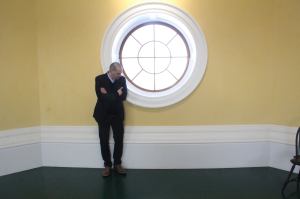Freedom of Speculation (Thought)
“”Bolder men than the revolutionary soldiers had, in their writings at least, overthrown the entire system of ancient philosophy and its ancient prejudices. Hester had immersed herself in this spirit. She assumed a freedom of speculation (thought) that was typical enough for Europe at the time but one that our Puritan forefathers would have considered a crime deadlier than the one marked by the scarlet letter.
Nathaniel Hawthorne, The Scarlet letter, 1850
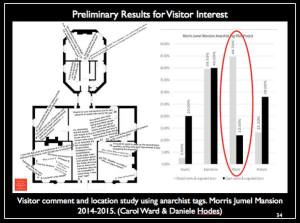
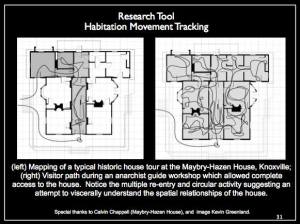
At my core, I am still the little boy lying on the living room floor, looking out the glass storm door, watching the world go by. An observer. A kinesthetic learner. I am a queer, dyslexic, sculptor, guided by, as Rufus Wainwright sings, “Pretty Things”. Today, I freely admit that, other people know a lot more about the facts of history than I do. I have never made any claims otherwise. This is not false modesty, it is the truth. The one thing I do posses, is the naive, child-like freedom that comes from allowing oneself room to, as Hawthorne writes, “speculate”- or in more current language, freely think without the bias of tradition. Much of the “Anarchist Guide to Historic House Museums” research grew out of my personal frustration with traditional museum visitor experiences. I am essentially a child, looking for answers.
As I have matured in my thinking (aided by those around me), I can see the stark contradictions between my fairly non-intellectual, experience-based upbringing and the conceptually-driven, Ivy-league, almost intangible education of my adulthood. It is from the nexus of this tectonic fault line from which my thoughts arise – and in truth, where most professional criticism targets.
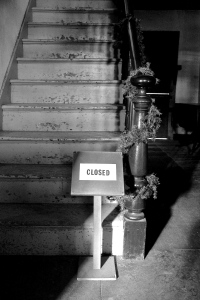
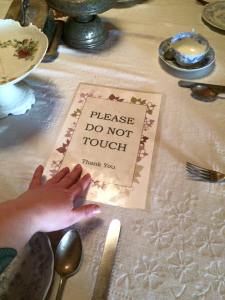
Still the little boy, sitting on the floor and observing the world around, much of my views come from experience and tactile experimentation. To some, this approach puts me outside of accepted professional practice – labeled me.
Just like an earthquake, my observations about history, cultural sites and interpretation, result in the re-configuration of stasis. This is not intentional; it merely is the condition of my existence. I think being an observer to my process is confusing. More to the point, being a participant must feel assaulting.
In Generation to Generation, by Edwin H. Friedman, he makes the case that social organizations (just like family systems) naturally seek stasis. Like an Alexander Calder mobile, when one particle of the constellation is addressed, all the others react, shift, and are forced into a new state of presence. This makes a lot of sense to me. I have seen this over and over at many cultural organizations of which I have been aware. As conscious and systematic as we try to engage change – it cannot help but to produce cataclysmic movements in the entire system.
The question in my mind is whether a natural inclination for speculation removes one to a place outside of the possibility for “doing”? At what point is the critical observer no longer able to engage in the very thing that he/she observes?
Much of my professional work has been, just as I did when I was a little boy in Gahanna, Ohio looking out the storm door, an attempt to observe the everyday, document normal life, to suggest ways in which our cultural organizations can better reflect the needs and desires of the contemporary world. It is, as Nathaniel Hawthorn writes, “Freedom of Speculation”, translated into modern English as “freedom of thought”, that can produce a safe environment from which expansive ideas and actions can grow. Perhaps more than anything concrete or actionable, is the need for providing this speculative intellectual environment within our cultural organizations. We find ourselves in a world of big data, statistics, ROI, and a request for “innovation”. But, one has to question if this “bias for action” isn’t a smoke screen to maintain stasis, when such action needs to comply and be justified by pre-determined data and organizational structure. As in a Calder mobile, true creative action is not fully calculate-able, nor prescriptive. Freedom of thought cannot be managed.
Scarlet Letter’s Hester was many things at the same time, full of complexity, contradiction, good and flawed – essentially human. What is needed in our cultural institutions, is a management set on producing a truly creative atmosphere that values alternative thought, speculation, questions stasis, and embraces the messy, fuzzy process of contradiction. The alternative to this leadership grows out of a rigid and absolutist philosophy, which in turn, results in the display of Hawthorne’s scarlet “A”.
The observations from our research are meant to be self-revelatory – A documentation of existing conditions.
Copyright © 2016 Twisted Preservation| “Twisted Preservation”, “One-night Stand”, “Sleeping Around” are trademarks of Franklin D. Vagnone. All rights reserved.

